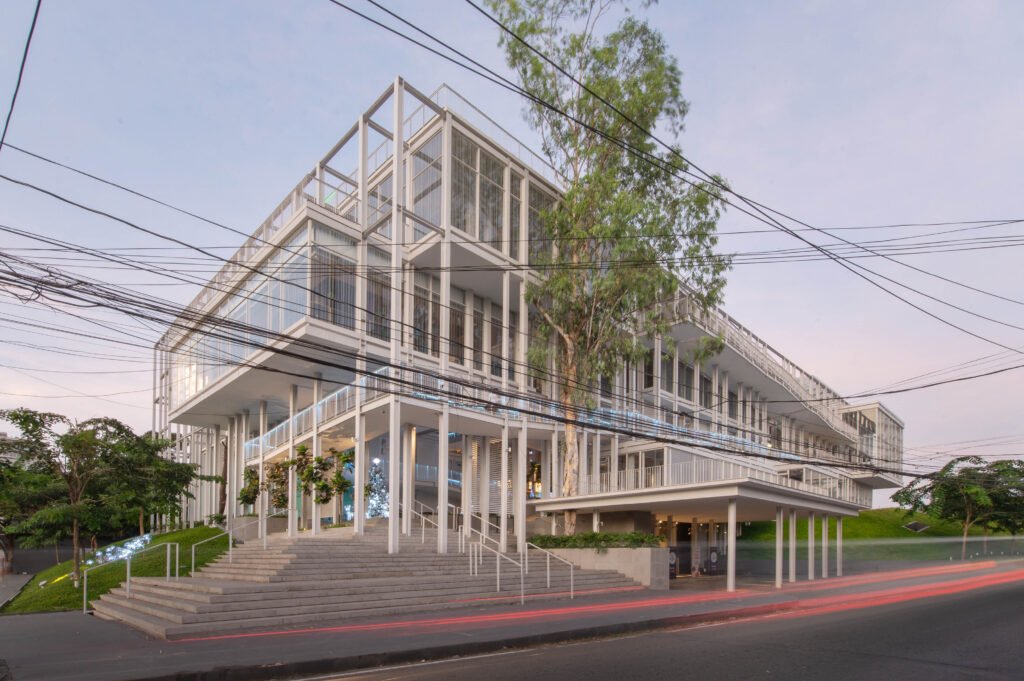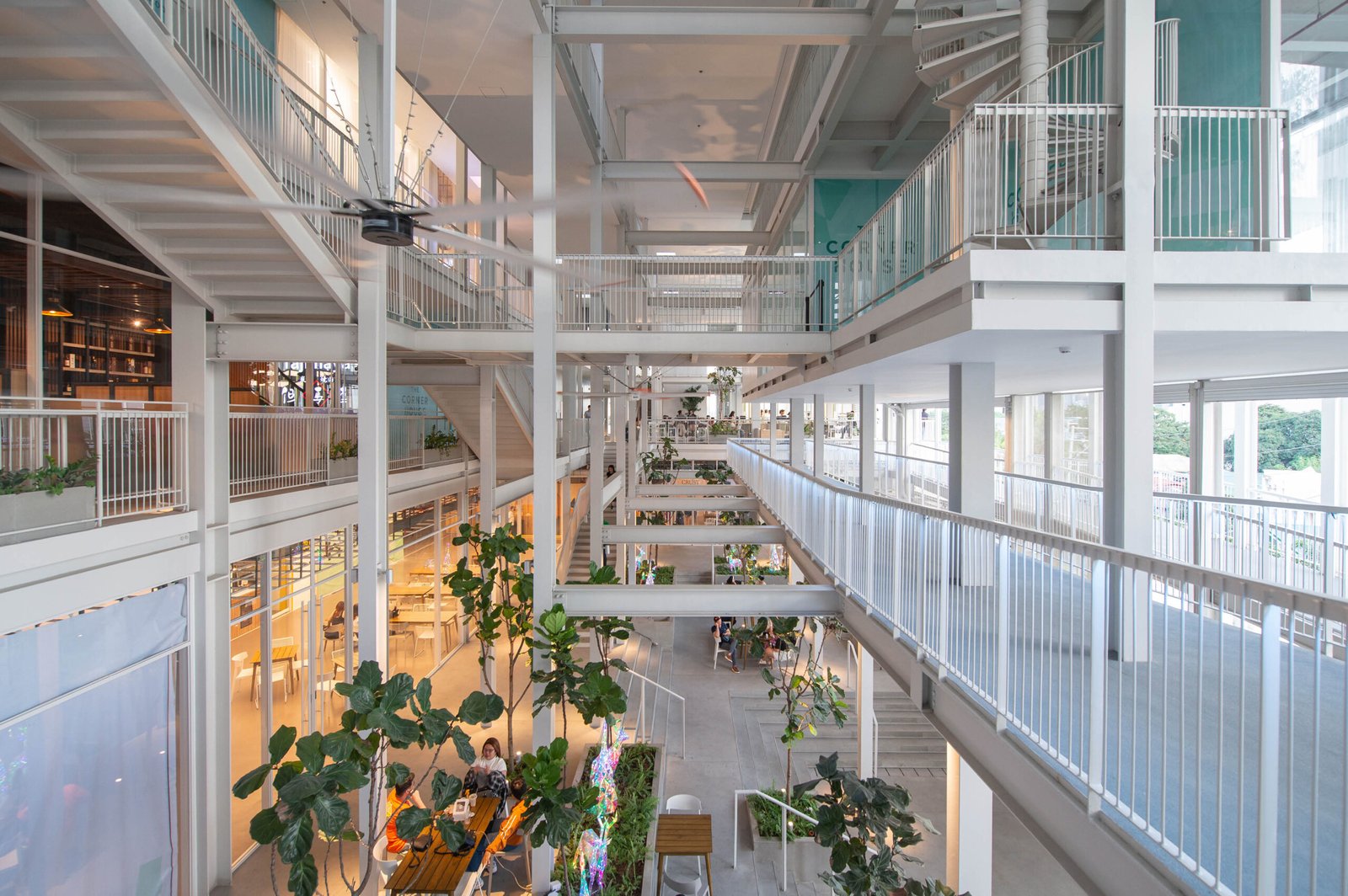Words and Interview Patrick Kasingsing
Co-editing Lawrence Carlos
Images Greg Mayo (The Corner House)



“It’s all organic! We haven’t even started our marketing push just yet,” declares marketing manager Jas Reducindo when asked about how The Corner House San Juan went viral.
She’s just finished giving me a tour of this new striking community center in the heart of the city of San Juan. One can’t miss it from the corner of P. Guevara and Recto Streets, with its forest of slender white I-beam columns rising from vegetated berms. Glazed boxes punch through from the structural steel frames at irregular intervals, while ramps stretch across and rise to offer views of other parts of the city.
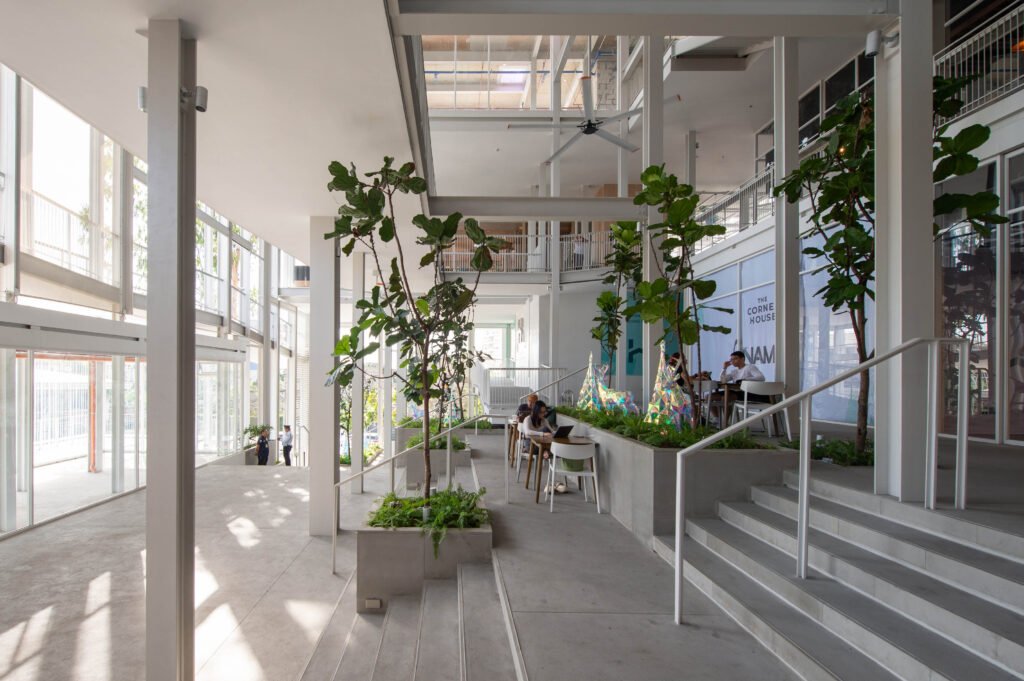

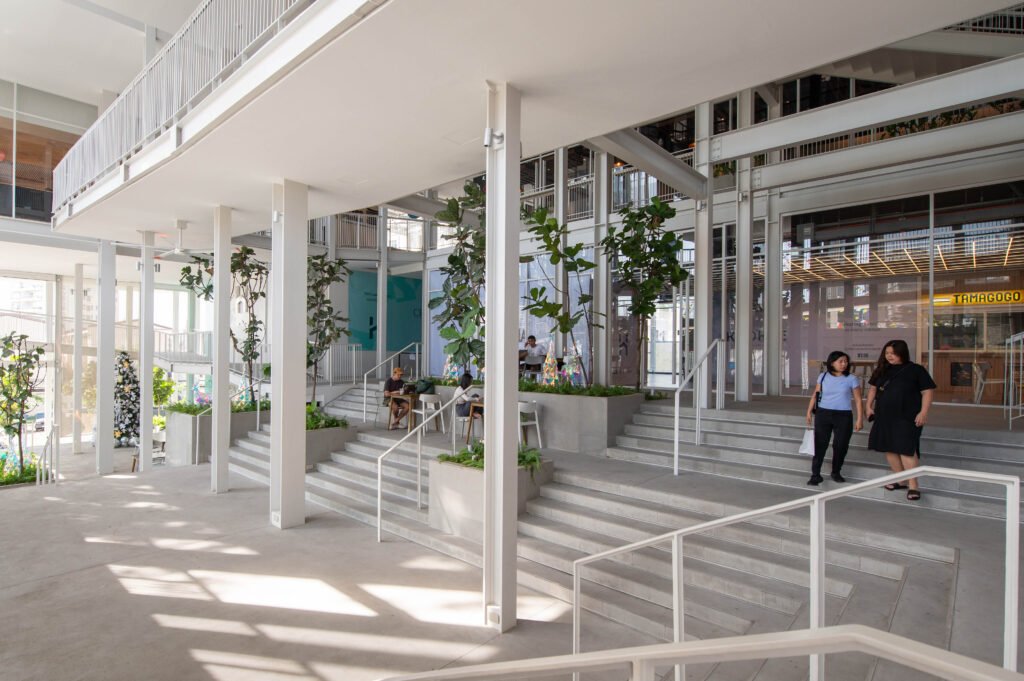

Reducindo adds, “[On] one side you can see Quezon City, [on] the other side you can see Makati…so it’s like your reward after going the 500 meters up and the 500 meters down,” referring to the jogging path that ascends the building in an attempt to activate its circulation and façades beyond conventional retail frontages.
Even on soft opening, The Corner House San Juan already looks like a vibrant container for conviviality. The current level of footfall bodes well for a retail development that is still only half full. For developer and project visionary Arthur Dichaves, the strength of the concept lies in the tenant mix and the premium they placed on open space. “We prioritized tenants with new concepts and ideas over chains and franchises. We are like a startup space for startups!” Dichaves proclaims.
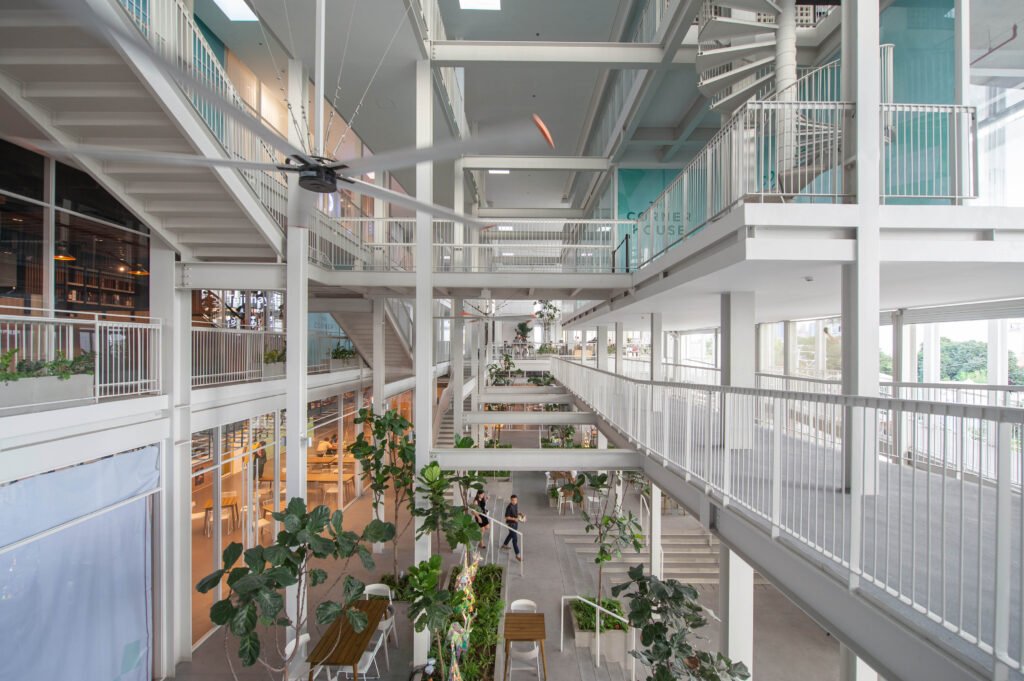
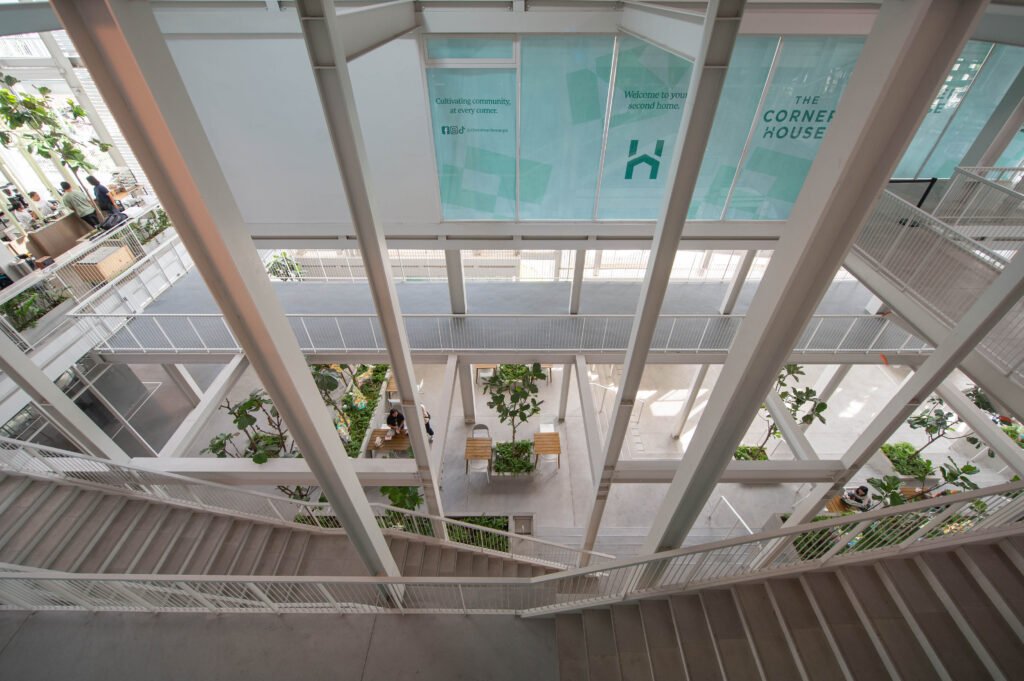
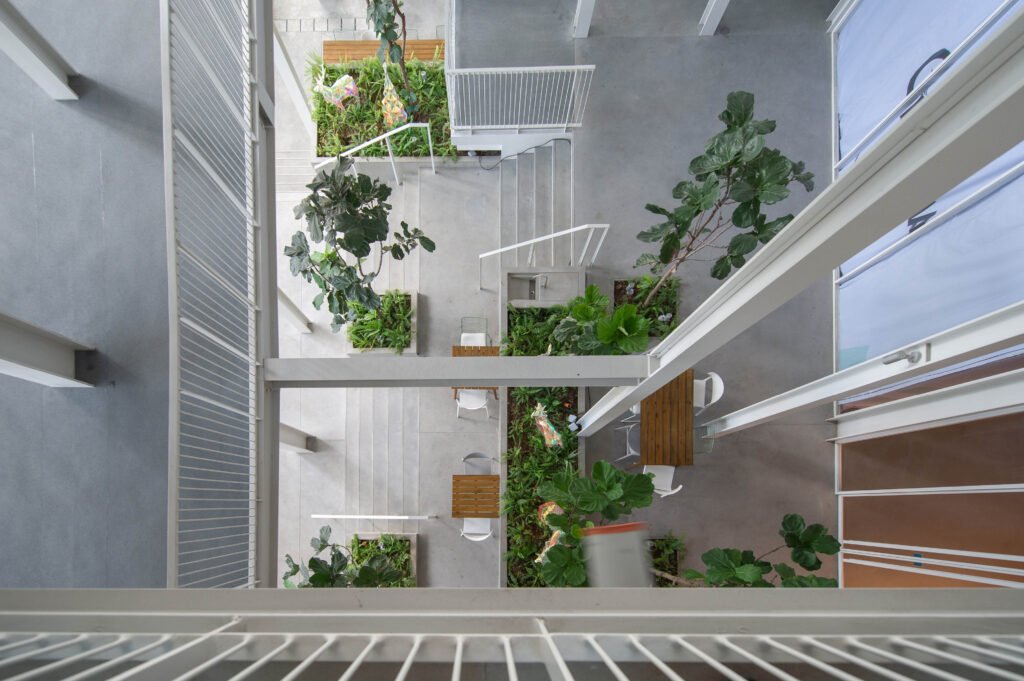

In affording a more significant proportion to common space, this more novel approach (as opposed to fully enclosed malls with little space for sedentary comfort) is designed to encourage visitors and customers to properly sit and relax. Social stairs are aplenty. The intention is for The Corner House to be a place to linger and gather and not merely where quick transactions take place.
Expounding on the genesis of his vision, Dichaves continues, “When you go to, for example, Hong Kong, the mall is open, but the shops are closed, but you can go through it. Here in the Philippines, it’s a bit of a foreign concept. So, I also looked at the interstitial spaces that link [to the city, which] are always open.”
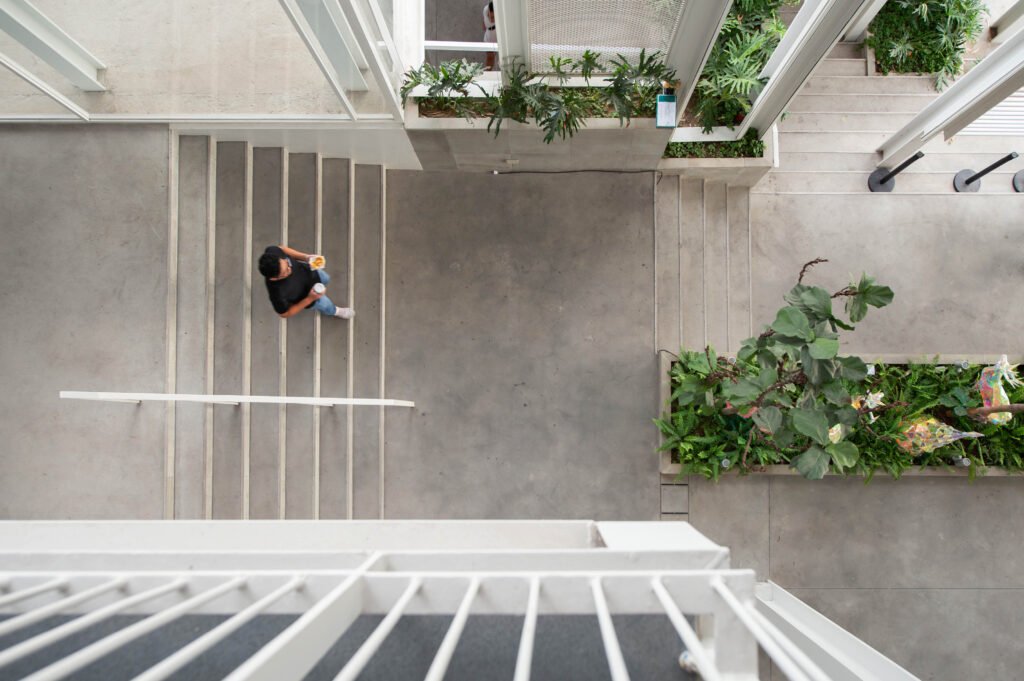

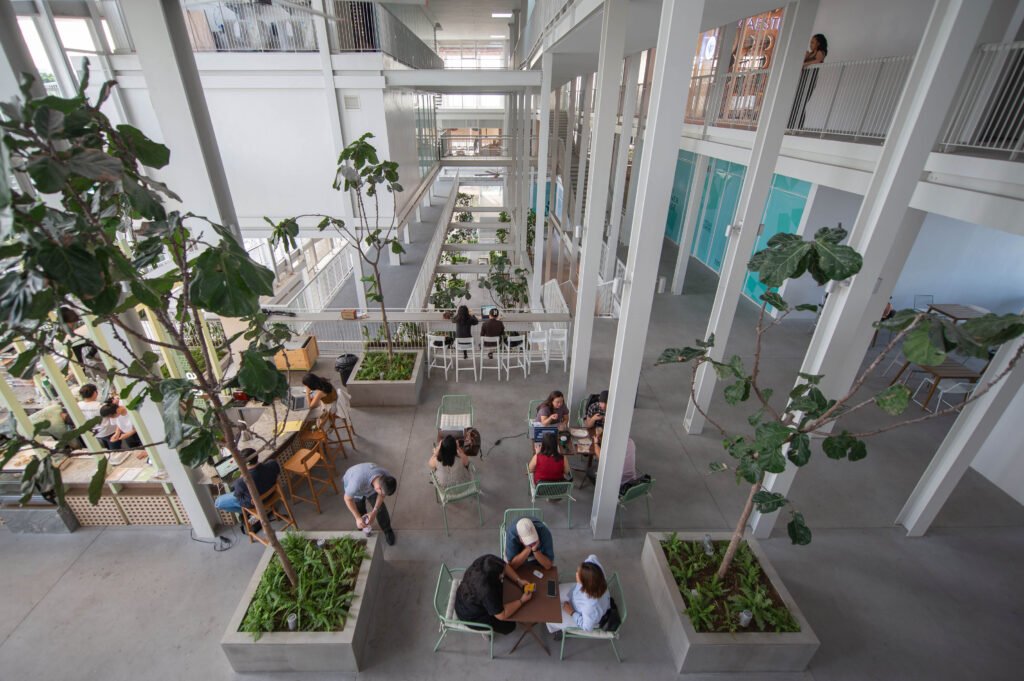

The Corner House presents a bold model for the community center typology in the Philippines and its success will eventually be measured once all tenants have bedded themselves in. The developer is keen to forge long-term relationships with local brands they partner with. Dichaves is adamant that “this is a brand we’re going to run properly.” Their partner mix is diverse: even among F&B alone, the ‘menu’ offered across all establishments is broad; there are salons, galleries, yoga centers, and an upmarket grocery on the ground floor.
There are also signs that, as the building claims this part of the city through its presence, the surrounding bedroom community is gradually warming up to its striking new neighbor. Reducindo mentions that the ones who live nearby and see The Corner House daily are the “best survey possible” for how they gauge whether it is doing well. Having been used to Greenhills for the longest time, it seems the San Juan community finally has something they can own for themselves.

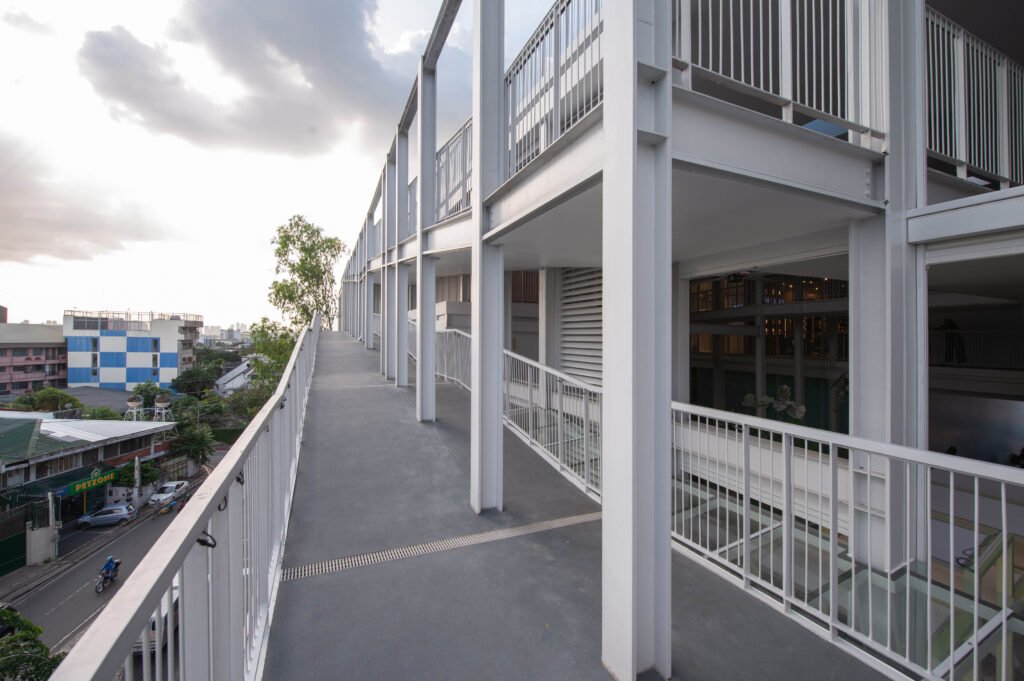


For the design-eye-discerning traveler, if The Corner House finds semblance to the lofty halls and forest of pillars in equally IG fodder theCOMMONS Thonglor, that is because they both trace their DNA to the same Bangkok-based firm, the Department of Architecture. The architects, working with their local counterpart BAAD Studio, originally designed the steel columns to be substantially slimmer, but these were thickened due to earthquakes in the Philippines.
As the foreign architect-in-charge, they were very hands-on throughout the entire process–so much so that they consider the building their best work to date. Even the opening was delayed until the finishes were done to the developer and architect’s expected standard–those that were badly executed were rejected and redone over and over until they were on par.
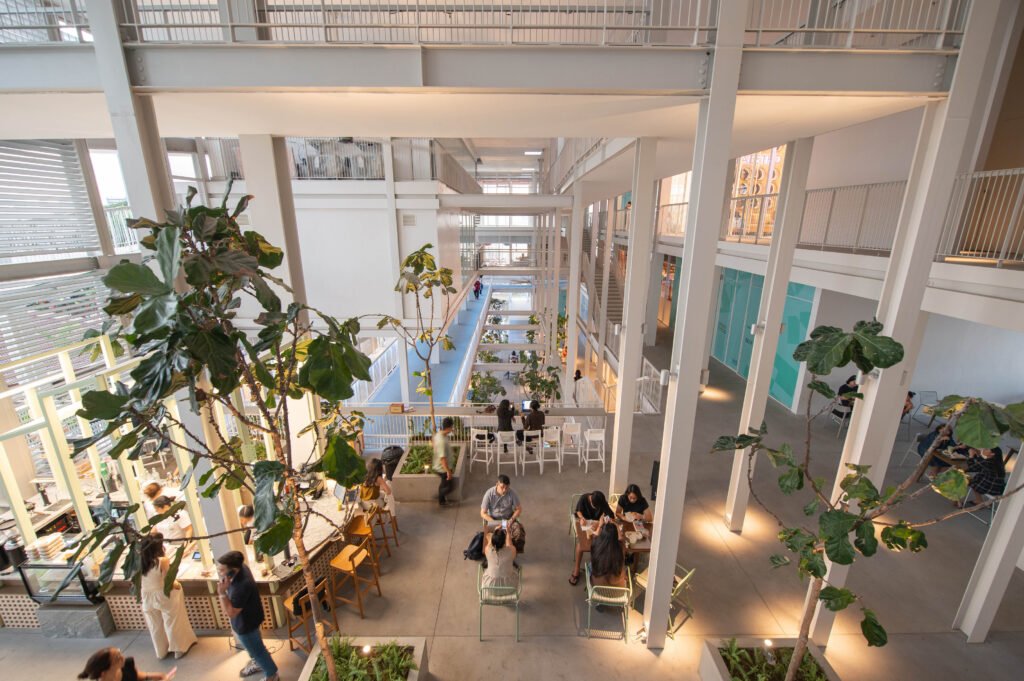



The design’s response to its environment also helps make The Corner House a place to stay and slow down. Its openness draws breezes right through the heart of the building, and Dichaves is even comfortable with a bit of rain straying inside the common spaces. When it does rain, a sensor detects rainfall levels and automatically deploys an awning system to shield shop frontages. Monochromatic finishes become illuminated in different colors filtered through dichroic film-finished glass, capping skylight openings across the ceiling.
As with any development on soft opening, there are bound to be teething issues. I spotted a guy mid-TikTok routine in possibly one of the most striking public restrooms I’ve ever entered. Despite the restroom being luminous and spacious, the wall to the outside behind the wash basins is fully glazed. The loss of privacy may startle a few customers. The roof deck where the jogging path culminates and what closes the loop is also closed, so it remains to be seen how this function can be managed operationally without detracting from the original intent.
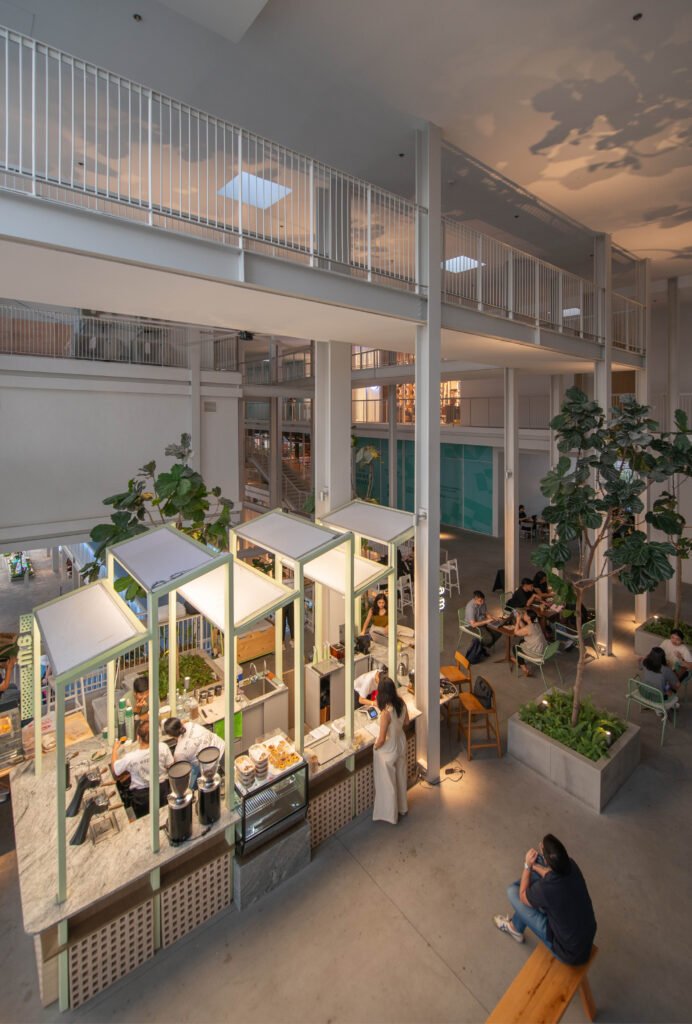

The Corner House does ask its users to adopt a change in behavior, as much as it offers something unique. The best-case scenario is that it continues to grow and be “the living room of the city.” With ongoing plans to host events and community gatherings, the stage is set for a customer experience that includes the immediate urban context beyond its lot boundary. As is often the case with other privately developed retail spaces in the country, activity is either contained or inward-looking. This building flips the script. Bringing the city in and letting activity spill out onto the streets one and the same is a cornerstone of many a vibrant community.
TikTok magnetism isn’t all that animates the center. I stayed throughout the day in the space, both for the interview and the shoot, and watched as people of all ages wandered inside. You have students doing group work, working professionals in Zoom meets, business types walking in mid-phone call, gravitating towards a.m. coffee, located at the heart of the center, often mistaken as the anchor tenant (note: there are none).


Surprisingly, Dichaves isn’t a frequent social media user, so one could say he’s oblivious to the hype, but he knows what he sees on the ground. “I’m just happy that there are a lot of people…people are laughing…people TikToking…I’m just happy that I feel like they accepted the concept.” Dichaves is closely observing how this experiment unfolds; hypothetically speaking, should it do favorably well, it may not be the only corner in the country that will be unlocked in this way. •
